What the rising GDP and per capita income are not telling us
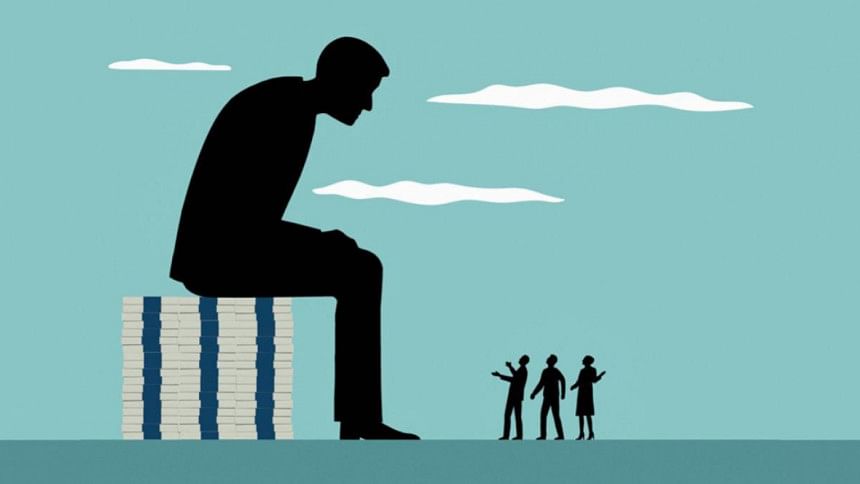
On April 4, 2019, the World Bank presented its latest economic forecast that Bangladesh's economy will grow at 7.3 percent in the fiscal 2019. Whereas a day earlier, the Asian Development Bank (ADB) predicted that the Gross Domestic Product (GDP) growth would be 8 percent. On the other hand, Finance Minister AHM Mustafa Kamal is more confident and expects that GDP growth in fiscal 2018-19 will be higher than 8 percent—more likely 8.13 percent—and he is also anticipating an increase in the country's per capita income to USD 1,909 in the current fiscal year, up from USD 1,751 in the previous fiscal year (2017-18). While a debate over the GDP growth target is going on, one might ask, "Is the GDP growth or per capita income a clear indicator of the level of well-being in a country?"
To answer the question, let's start with the basic economics 101. In economic literature, economic growth and economic development are often used interchangeably but there is a difference. Growth and development are two different economic phenomena. Growth refers to the simple increase in a country's GDP, in percentage terms. It shows how much the production of goods and services has increased compared to last year in a quantitative manner. In other words, economic growth is just a measure of how fast the GDP is growing.
By contrast, economic development is a qualitative process and refers to the structural change of economic and social infrastructure in an economy, which allows an increase in the standard of living of a nation's population. In short, it focuses more on the progress in the socio-economic structure of an economy rather than just a quantitative increase in production. On the other hand, per capita income indicates the income each person would have if GDP were equally divided among the population of a country. It is an average estimate.
Undoubtedly, GDP, GDP growth and per capita income are most prominent indexes used to measure the economy of a country. But there are lots of shortcomings—these indexes do not tell us the full story of an economy. GDP is a broad measurement of a nation's overall economic activity that includes all private and public consumption, government outlays, investments and export minus imports, but does not distinguish between those activities that promote well-being and those that degrade well-being. It does not tell us anything about the crucial aspects of well-being such as public health, nutrition, growing disparity between rural and urban incomes, low standard of living, hazardous urbanisation and its social costs and environmental impacts, rising unemployment, political freedom, etc.
In a famous speech in 1968, Robert F Kennedy made this comment about GDP: "Our gross national product…counts air pollution and cigarette advertising and ambulances to clear our highways of carnage. It counts the destruction of our redwoods…Yet it does not allow for the health of our children, the quality of their education or the strength of our marriages; neither our wisdom nor our learning; neither our compassion nor our devotion to our country which makes life worthwhile."
Likewise, nowadays our leaders never miss an opportunity to talk about rising GDP and per capita income but they never speak about the impact of this growth which has actually bypassed the majority of the population while higher-income groups have been the main beneficiaries. A report titled "Household Income and Expenditure Survey (HIES) 2016," published by the Bangladesh Bureau of Statistics (BBS), shows that the rich-poor gap in terms of wealth accumulation has been widening in the country. The poorest five percent had 0.78 percent of the national income in their possession back in 2010, and now their share is only 0.23 percent. By contrast, the richest five percent, who had 24.61 percent of the national income in 2010, now have a higher share—27.89 percent, to be precise. In other words, the bottom five percent's share of national income has decreased whereas the richest five percent's share has increased.
Very recently, ADB has presented a paper titled "Spreading equitable development in the countryside" that showed that the per capita income in rural areas of Bangladesh lags far behind that of the two big cities, Dhaka and Chattogram. For example, it showed that the per capita income of districts such as the southeast hill-tracts of Khagrachhari was Tk 24,556 in 2010—36 percent of Dhaka's Tk 66,548—and the per capita income of northeast border district Sunamganj was 42 percent of that of Dhaka. Then, in another report, released jointly by BBS, World Bank and the United Nations World Food Programme (WFP), it was revealed that of a total of 49.4 million poor people of the country, 15.9 million or 32.3 percent live in Dhaka and 8.3 million live in Chattogram. This means that nearly half of the country's total poor population live in these two regions which have the highest contribution to the national GDP—with Dhaka metropolis alone contributing 36 percent and Chattogram 11 percent.
So, the increase in the national per capita income from USD 1,751 to USD 1,909 does not necessarily mean a greater and equitable distribution of wealth for the greater populace.
Moreover, even with high growth, there's no guarantee that growth will cause higher employment. As a matter of fact, the economic growth achieved by Bangladesh over the past few years has been what is referred to as "jobless growth". It has failed to create enough jobs for the millions of young Bangladeshis joining the workforce every year. Different studies show that between 2013 and 2017, while the average annual GDP growth was 6.6 percent, the average annual growth of jobs was only 0.9 percent. The employment share of the manufacturing sector actually declined from 16.4 percent to 14.4 percent. According to a report published by the United Nations Population Fund (UNFPA), some 47.6 million or 30 percent of the total population are young (10-24 years), and of them, 25 percent—numbering around 11 million—are currently inactive, i.e. they are neither in the education cycle nor involved with any economic activity.
Unfortunately, the unemployment rate is higher among the higher educated group of the youth. Worrying still is that almost 1 in 4 Bangladeshis (24.3 percent of the population) lives in poverty, and 12.9 percent of the population live in extreme poverty. Yet, our politicians and economists are addicted to GDP, GDP growth and per capita income.
GDP or growth tells us nothing about our unplanned urbanisation, environmental quality, levels of health or education. Bangladesh ranked the second worst country in curbing environmental pollution. A recent study shows that the toxic air that we breathe in Bangladesh led to 1.23 lakh deaths in 2017. While GDP is rising, our cities are growing in an unsustainable manner—parks, open spaces, rivers, canals and water bodies are gradually disappearing. The rivers and waterways are gradually shrinking and drying up due to the huge depositions of silt and waste. As per a survey of the Bangladesh Water Development Board (BWDB), there are three hundred and ten rivers in Bangladesh. Out of these rivers, the condition of one hundred and seventy-five is miserable, and sixty-five are almost dead.
It is sad that even after 48 years of independence, the country's healthcare sector is in a shambles. Every year, a large number of people including politicians, businessmen and even common people go to Singapore, Thailand and India for their medical treatment, due to a lack of confidence in our healthcare system. A recent estimate by Bangladesh Investment Development Authority (BIDA), which was prepared using the data of Health Bulletin, says that Bangladeshis spend around USD 2.04 billion annually on healthcare abroad.
Our education system is really disappointing; it is not effectively serving the goals of human development. There is a lack of adequate communication and collaboration between the government, academia and industry. The consequence of this is evident when we find that a substantial chunk of skilled jobs in our industries and other economic enterprises is occupied by professionals from foreign nations. Unfortunately, there is no accurate data on foreign employment in the country or the number of foreign employees. But industry insiders claim that over 500,000 foreign nationals are currently working in several industrial sectors like apparel, textile, buying house, telecommunication, information technology, etc.—earning nearly USD 5 billion in remittances that flow out of Bangladesh.
However, I am not saying that GDP or per capita income is useless or means nothing. What I am trying to say is, scoring big in these economic indicators shouldn't be the government's only objective, nor should GDP or per capita income be considered a definitive measurement of human welfare, because excessively focusing on these economic indicators takes our attention away from the real measurement of a country's progress—people's overall well-being. We must put more emphasis on investment in human capital, life-long learning, social protection, and good governance, and need to build people-centred economy where all citizens will have equal access to health and quality education so they can help in the development of society.
Abu Afsarul Haider studied economics and business administration at the Illinois State University, USA, and is currently involved in international trade in Dhaka. Email: [email protected]
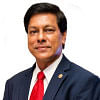



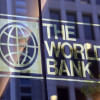
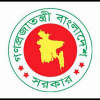
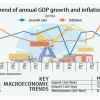
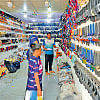


Comments